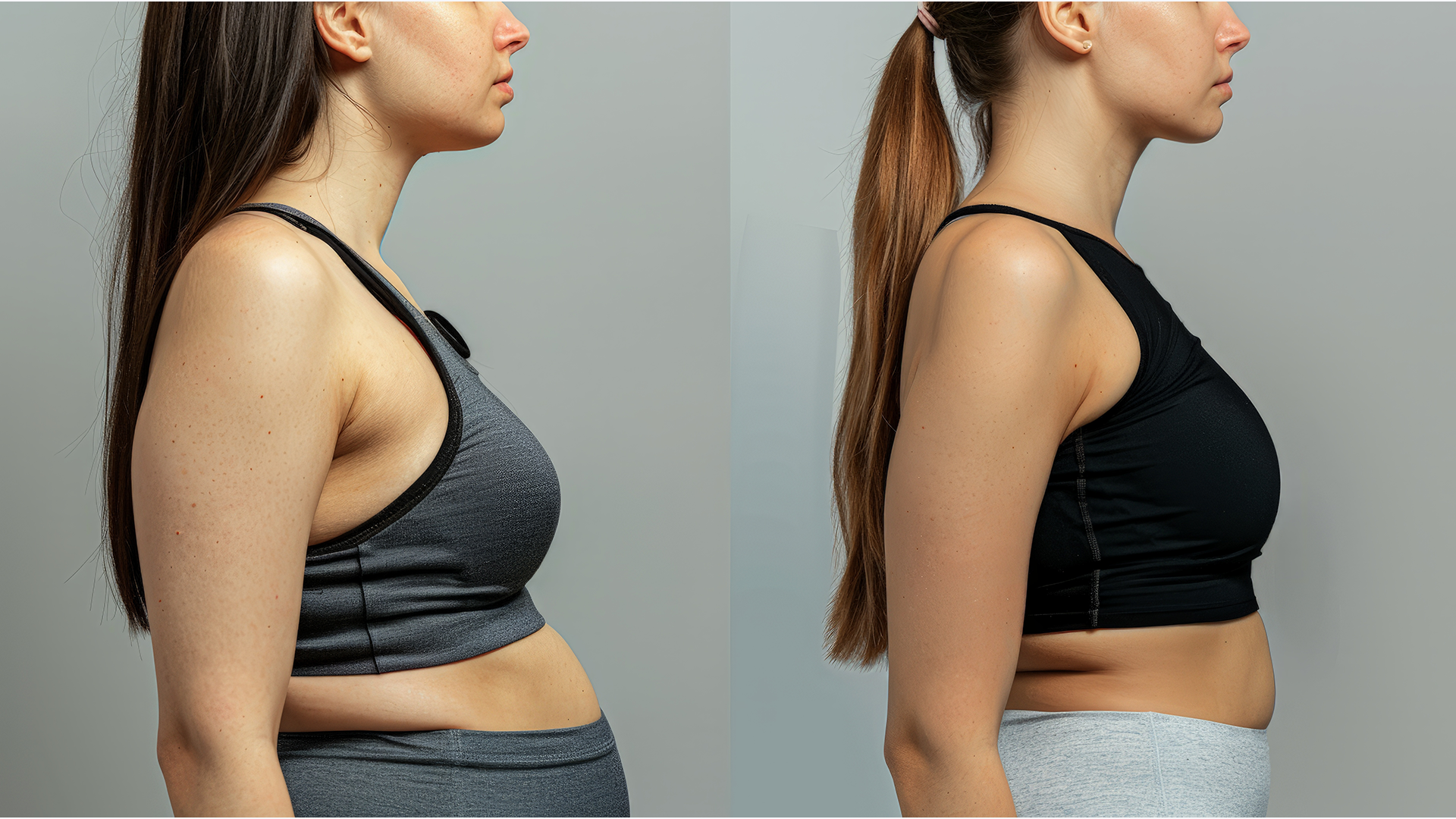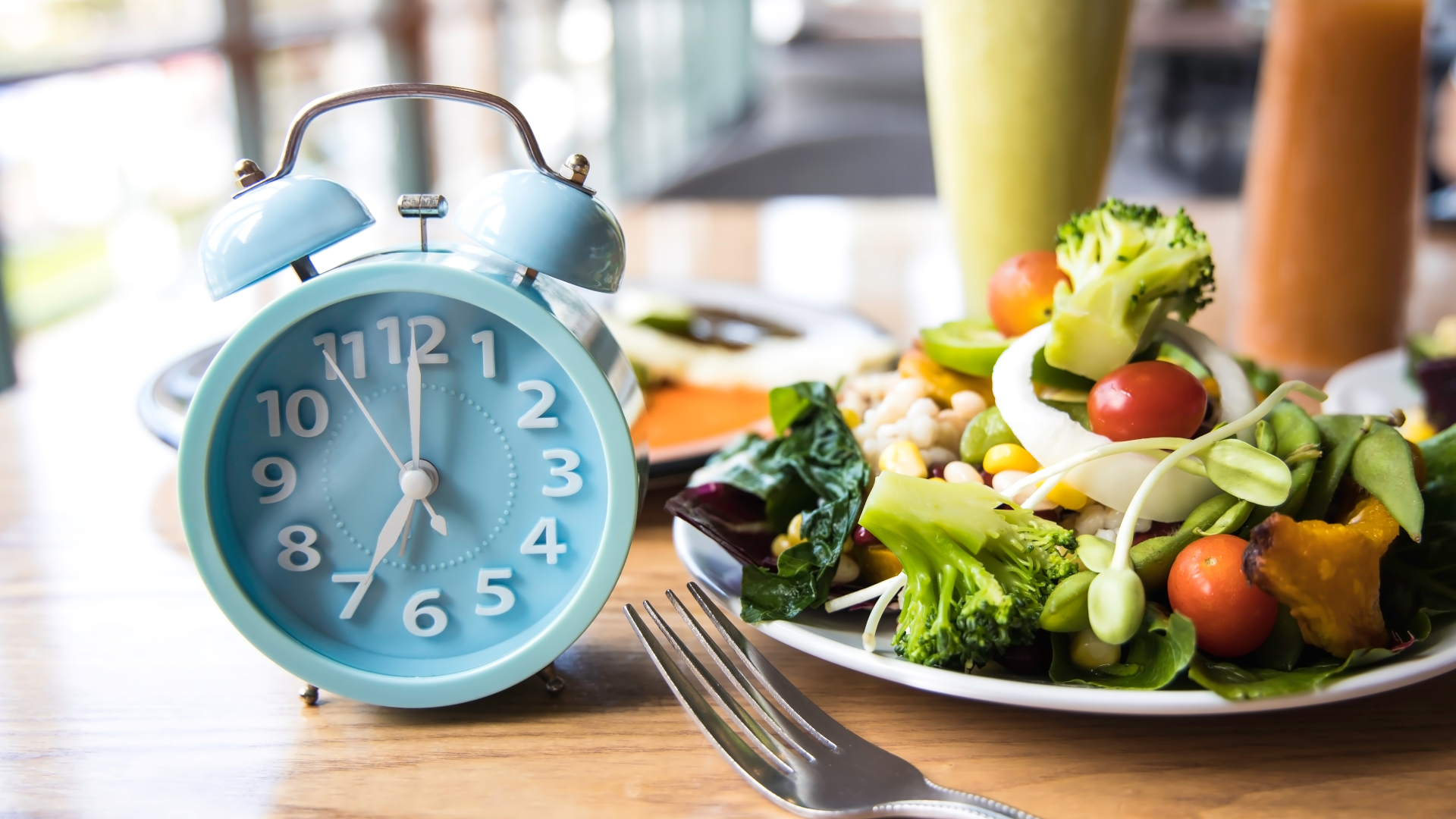What you’ll learn here… |
Ready to crack the code on calories and unlock your weight loss potential?
We know you’ve heard the popular saying: Calories in, calories out. But what does that really mean for your journey to a healthier you?
Whether you’re just starting out or looking to deepen your understanding of calories and weight loss, we’ve got you covered.
Understanding calories is crucial for weight loss because it's all about balancing the energy you consume with the energy you burn.
By mastering this balance, you'll be empowered with enough information so you can make great choices that help you shed pounds and keep them off—while feeling even greater internally.
Here, we’ll demystify the calorie conundrum, share actionable tips for caloric counting and other sustainable weight loss methods, and provide the solutions you need to conquer your goals.
Let’s go.
What is the role of calories in weight loss?

While calories are talked about almost everywhere you turn, it’s crucial to understand what a calorie actually is before diving into the realm of calories and weight loss.
First things first, let’s break down what a calorie actually is.
A calorie is a unit of energy that our bodies use to function. Think of it as fuel for your body’s engine. Whether you're walking, talking, or even sleeping, your body needs calories to keep running smoothly.
Every bite of food and sip of drink you take contains calories that are converted into the energy you need to power through your day.
Almost everything we consume has a calorie count, and those calories mainly come from three energy sources—carbohydrates, proteins and fats.
So, why is this important to know for weight loss? Well, because managing your caloric intake and expenditure can help you achieve and maintain a healthy weight.
Calories in vs. calories out
Now, you may be understanding what calories are, but you may not know how much you’re expected to consume.
So, let's dive into the concept of "calories in vs. calories out," which is the golden rule of weight loss. It all boils down to energy balance.
"Calories in" refers to the calories you consume through eating and drinking.
“Calories out" is the energy you burn through basic bodily functions (like breathing and digestion) and physical activities (like walking, exercising, and even fidgeting).
When you consume more calories than you burn, your body stores the excess as fat, leading to weight gain. On the flip side, when you burn more calories than you consume, your body taps into those fat stores for energy, resulting in weight loss.
Understanding this balance is crucial because it empowers you to make informed choices about what you eat and how active you are.
By paying attention to your calorie intake and expenditure, you can create a calorie deficit that leads to weight loss. It's like having a financial budget: if you want to save money, you need to spend less than you earn.
Similarly, for weight loss, you need to burn more calories than you consume. That’s the key.
How many calories should I eat to lose weight?

It can be tricky to find a clear answer to how many calories you should eat to lose weight, but let’s consider why.
According to dietary guidelines in the United States, adults 21 years old and older should consume anywhere between 1,600 and 3,000 calories per day.
But, Everybody’s daily calorie needs are different, which can make it hard to figure out the magic number.
There are several factors that can impact your caloric intake, like…
- Sex
- Height
- Weight
- Age
- Activity level
- Hormones
- Medications
But to lose weight, a huge part of the formula is being in a caloric deficit.
Caloric deficit
When it comes to losing weight, the magic phrase you need to know is "caloric deficit." This simply means consuming fewer calories than your body needs to maintain its current weight.
Think of it as creating a budget: if you spend less than you earn, you’ll save money. Similarly, by eating fewer calories than you burn, your body starts using its fat reserves for energy, leading to weight loss.
This doesn't mean you have to drastically eat less all of a sudden—it's about making smarter, more mindful food choices for sustainable weight loss.
Generally, guidelines recommend that reducing your daily intake by 500 to 750 calories can help you lose about one to 1.5 pounds per week, which is a healthy and sustainable rate. Remember, the goal is steady progress, not a drastic drop that could be harder to maintain.
Metabolism
Now, let's talk about metabolism—the “dark horse” in your weight loss journey, which is often overlooked.
Metabolism is the process your body uses to convert your food into energy. Even when you're at rest, your body needs energy for functions like breathing, circulating blood, and repairing cells. This is called your Basal Metabolic Rate (BMR).
Factors like age, muscle mass, and activity level play a big role in how fast or slow your metabolism runs.
As we get older, our metabolism slows down, which means our body burns fewer calories .But, there’s a caveat: The more muscle you have, the higher your BMR, since muscle burns more calories at rest compared to fat. This is why strength training can be a game-changer for boosting your metabolism.
Also, staying active throughout the day—whether it's through routine exercise or just moving around more—can significantly increase your Total Daily Energy Expenditure (TDEE), which is the total number of calories you burn in a day.
So, by combining a steady caloric deficit with a metabolism-boosting lifestyle, you'll create the perfect recipe for sustainable weight loss.
Understanding how many calories you should eat to lose weight involves a little math and a lot of self-awareness.
By knowing your BMR and TDEE, you can tailor your caloric intake to fit your personal needs and weight loss goals. It’s all about finding that sweet spot where you're eating enough to fuel your body but not so much that you're storing excess energy as fat.
Discover more about metabolism: How To Speed Up Metabolism For Weight Loss
Weight loss and calorie counting: Top tips

Weight loss and calorie counting can seem like a tricky maze where you never can find a way out.
But, with the right tips, you can navigate your caloric counting journey like a pro.
Here's how you can get started with confidence.
Step 1: Figure out your basal metabolic rate (BMR)
BMR is the number of calories your body needs at rest to maintain vital functions like breathing and keeping your heart beating.
To calculate your BMR, you can use the Harris-Benedict equation (if you’re good at math) or simply plug your details into an online BMR calculator.
Knowing your BMR helps you understand the minimum calorie intake your body requires, even on a lazy day.
Step 2: Calculate your total daily energy expenditure (TDEE)
TDEE includes all the calories you burn in a day, accounting for your BMR plus physical activities like walking, exercising, and even fidgeting.
To find out your TDEE, multiply your BMR by an activity factor (ranging from sedentary to very active). Online TDEE calculators make this process a breeze, giving you a personalized snapshot of your daily calorie burn.
Step 3: Set a caloric goal for your weight loss
Now that you know your TDEE, it’s time to set a calorie goal. A safe caloric deficit is typically 500-1000 calories less than your TDEE, aiming for a weight loss of one to two pounds per week.
Gradual weight loss is key to sustainability and avoiding the dreaded up-and-down weight effect. Remember, slow and gradual weight loss is healthier for your body than rapid and drastic weight loss.
Step 4: Get into the habit of reading food labels
Understanding nutritional information on food labels can empower you to make better choices. Pay close attention to serving sizes, calories per serving, and the breakdown of macronutrients (proteins, fats, and carbohydrates).
Beware of common pitfalls like hidden sugars and misleading serving sizes that can trip up your calorie-counting efforts.
Step 5: Discover methods of tracking your weight loss
Keeping track of your calorie intake is crucial. Food diaries and journals can be a great way to log your meals and snacks.
If you prefer a tech-savvy approach, there are numerous mobile apps and online tools designed to help you monitor your calories effortlessly. Apps like MyFitnessPal or Lose It! offer vast food databases and handy barcode scanners to make tracking easy and even fun.
Making healthier food choices

Let's talk about making smarter food choices that nourish your body and still keep you satisfied. Nobody wants to eat food that isn’t delicious or pleasing to the tastebuds, but there is always a scrumptious, healthier alternative to high-calorie foods.
But, the top secret lies in understanding nutrient density vs. caloric density. Nutrient-dense foods pack a powerhouse of vitamins, minerals, and other essential nutrients without loading you up on calories.
These foods keep you full and energized, making it easier to stick to your weight loss goals.
Foods that are low in calories but high in nutrients…
- Meat and poultry (chicken breast, turkey breast, lean beef and fish)
- Leafy greens (Spinach, kale, and Swiss chard)
- Berries (Strawberries, blueberries, raspberries, and blackberries)
- Cruciferous vegetables (Broccoli, cauliflower, Brussels sprouts, and cabbage)
- Tomatoes
- Cucumbers
- Bell peppers
- Zucchini
- Asparagus
- Mushrooms
- Apples
By swapping out calorie-dense, nutrient-poor options like sugary snacks and processed foods for healthier yet still delicious choices, you'll see a big difference in how you feel and look.
Macronutrients
Now, let’s dive into the magic trio of macronutrients: Proteins, fats, and carbohydrates. These three besties are essential for a balanced diet and play a significant role in your weight loss success.
Protein is your winner for building and repairing tissues and keeping you full longer, which helps curb those pesky cravings. Think lean meats, beans, and Greek yogurt. Healthy fats, found in avocados, nuts, and olive oil, absorb vitamins and keep your skin glowing.
But let’s not forget carbs—your body’s main energy source. Go for whole grains, fruits, and veggies to fuel your day and keep you powered up.
Creating a balanced meal plan might sound tricky, but it’s all about variety and portion control. Start by filling half your plate with colorful veggies or fruits. Add a quarter with lean protein to keep those muscles strong and another quarter with whole grains for sustained energy. Don’t forget a splash of healthy fats, like a drizzle of olive oil on your salad or a handful of nuts. This way, you’ll get a mix of macronutrients in every meal.
It’s important to be gentle with yourself on this journey and understand that making healthier choices is about fueling your body with the right nutrients to feel your best.
Embrace these nutrient-dense foods and balanced meals, and you'll be well on your way to achieving your goals.
Related: Fat-Burning Foods: What To Eat To Burn Fat
Best low-calorie diets

Did somebody say diet? Often, people think of fad diets or making drastic changes to their diet.
But, there are a range of effective low-calorie diets that can get you steps closer to your goal. These options can help you achieve your weight loss goals, but also, give your body the nutrients it needs..
Let’s take a quick look…
1. Mediterranean diet: Focuses on whole foods like fruits, vegetables, whole grains, lean proteins (especially fish), and healthy fats (olive oil, nuts).
Plus point: Promotes heart health, rich in antioxidants, and easy to stick to long-term.
2. DASH diet: Stands for Dietary Approaches to Stop Hypertension. This particular diet leans toward fruits, vegetables, whole grains, lean proteins, and low-fat dairy while limiting salt and sugar.
Plus point: Known for lowering blood pressure, supporting heart health, and aiding in weight loss.
3. Weight Watchers (WW): Uses a point system to help control calorie intake and encourages balanced eating with flexibility in food choices.
Plus point: Provides community support, easy-to-follow guidelines, and promotes a sustainable lifestyle.
4. Volumetrics diet: Focuses on eating low-calorie, high-volume foods like fruits, vegetables, soups, and salads to keep you full while reducing calorie intake.
Plus point: Helps control hunger, emphasizes nutrient-dense foods, and is practical for everyday life.
5. Plant-based diet: Primarily focuses on whole, plant-based foods including vegetables, fruits, legumes, nuts, and seeds while minimizing processed foods and animal products.
Plus point: High in fiber and nutrients, supports heart health, and can lead to sustainable weight loss.
6. Intermittent fasting: Involves cycling between periods of eating and fasting, such as the 16/8 method (16 hours fasting, 8 hours eating window) or 5:2 method (eat normally for five days and reduce calorie intake on the other 2 days).
Plus point: Can simplify eating patterns, may improve metabolic health, and supports calorie reduction without specific food restrictions.
7. Flexitarian diet: A flexible vegetarian diet that emphasizes mostly plant-based foods but allows for occasional meat and animal products.
Plus point: Encourages a healthy balance, easier to maintain, and reduces calorie intake by focusing on nutrient-dense, low-calorie foods.
Once you’ve decided whether you want to diet, you can weave it to your weight loss plan. And the best thing is—it’s possible to cherry pick ideas from two or more of these diets to create an eating plan that works for…you.
Read: 5 Ways To Get Your Weight Loss Back On Track
How to burn more calories and feel good

Burning more calories while feeling great is all about finding the right balance of activity, diet, and lifestyle habits that work for you.
Here are some enjoyable ways to boost your calorie burn and boost your wellbeing.
1.Move more
Engage in cardio activities like walking, jogging, cycling, or swimming to get your heart rate up and burn calories. Aim for at least 150 minutes of moderate aerobic activity or 75 minutes of vigorous activity per week.
Strength training and building muscle helps increase your resting metabolic rate, meaning you burn more calories even when you're not exercising.
This might include weight lifting, resistance band workouts, or bodyweight exercises (squats, push-ups, lunges) at least two days a week.
HIIT is a workout style that focuses on short bursts of intense activity followed by brief rest periods that can significantly boost your calorie burn in a shorter amount of time. These workouts can be done with various exercises like sprinting, jumping jacks, or burpees.
The take-home here? Move more in a way that makes you feel good, and you’ll reap plenty of body-boosting rewards.
2. Eat metabolism-boosting foods
Protein-Rich Foods: Protein takes more energy to digest compared to fats and carbohydrates, so adding lean protein sources like chicken, fish, beans, and tofu to your diet can help you burn more calories.
Spicy Foods: Ingredients like chili peppers contain capsaicin, which can slightly increase metabolism. Add some spice to your meals to boost calorie burn.
Green Tea: Drinking green tea may help increase your metabolic rate due to its catechin content. Enjoy a cup or two throughout the day for a gentle metabolism boost.
3. Stay hydrated
Drinking water helps maintain your metabolism and can also aid in feeling full, preventing overeating. Aim for at least eight cups of water a day, and more if you're active or in a hot climate.
4. Get adequate sleep
Quality sleep is crucial for maintaining a healthy metabolism and energy levels. Aim for seven to nine hours of sleep per night to ensure your body can recover and function at its best.
5. Manage stress
Chronic stress can negatively impact your metabolism and lead to weight gain. Practice stress-relieving activities like yoga, meditation, deep breathing exercises, or even hobbies you enjoy to keep stress levels in check.
6. Stay consistent
Staying consistent with weight loss is all about making it enjoyable and part of your daily routine. Set small, fun goals and reward yourself for hitting them.
Try new recipes, switch up your workouts, and find a buddy to keep you motivated. The journey is never perfect, but that is not our aim—taking steps towards the end goal is going to feel rewarding.
7. Introduce supplements
When it comes to supplements for weight loss, it's important to remember they're meant to complement a healthy diet and active lifestyle, not replace them.
Some supplements that may aid in weight loss include caffeine, green tea extract, garcinia cambogia or conjugated linoleic acid (CLA).
But, there are a wide range of types of weight loss supplements, including stimulants, appetite suppressants, fat burners, carb blockers, thermogenics, and fat absorption inhibitors.
Note: Before starting a new supplement regime, be sure to consult a healthcare professional for personalized advice.
Final thoughts
Well done for completing the guide for calories and weight loss. You've taken an important step toward understanding how the energy balance equation can impact your journey to a healthier you.
Remember, it's not just about counting calories but making informed choices that nourish your body and support your goals.
As you continue on your path, remember the power of consistency and patience. Every small change adds up over time, whether it's choosing nutrient-dense foods, staying active, or finding a balance that works for you. Celebrate your victories, learn from setbacks, and, most importantly, listen to your body's cues.
Stay curious and open to trying new things—whether it's a new recipe, workout routine, or mindfulness practice. Your journey is unique, and every step forward is a testament to your commitment to health and wellbeing.
Thank you for joining us on this exploration of calories and weight loss. Remember, you're not alone on this journey—seek support from friends, family, or online communities, and always prioritize your health and happiness.
Now you’re ready to conquer and smash your goals, fully armed with the knowledge! If you ever need motivation, be sure to revisit this page.
Oh, and to stay on the right track, discover other benefits and methods of sustainable weight loss.
FAQs
Is calorie counting a good way to lose weight?
Yes, calorie counting can be a useful approach to losing weight because it allows you to track and manage your food intake.
By being aware of the calories you consume, you can make better choices and create a calorie deficit, which is essential for weight loss. But, it does depend on personal preference. Some people may prefer other weight loss tracking methods.
What is a good calorie count for weight loss?
A good calorie count for weight loss depends on several factors, including age, gender, weight, height, activity level, and overall health.
Generally, the goal is to create a calorie deficit, meaning you consume fewer calories than your body needs to maintain its current weight. Be sure to speak with a healthcare professional for personalized and tailored advice.
Can I lose weight without counting calories?
Yes, you can lose weight without counting calories by focusing on healthy eating habits, portion control, and implementing lifestyle changes, like the ways to burn more calories here in this guide.




